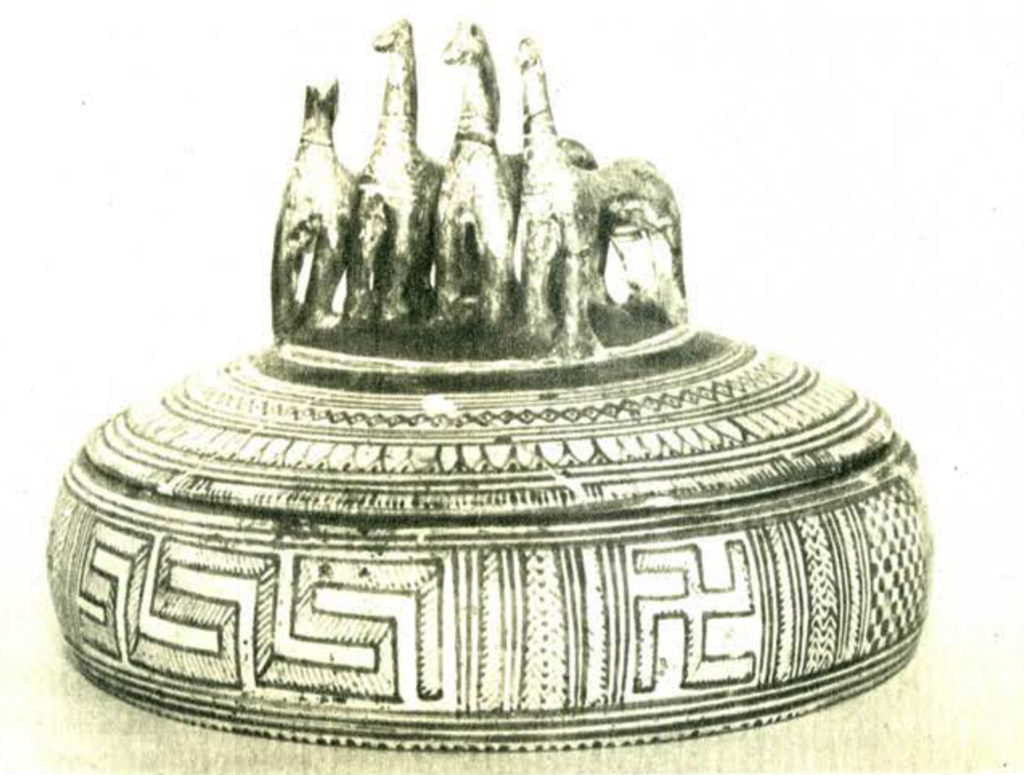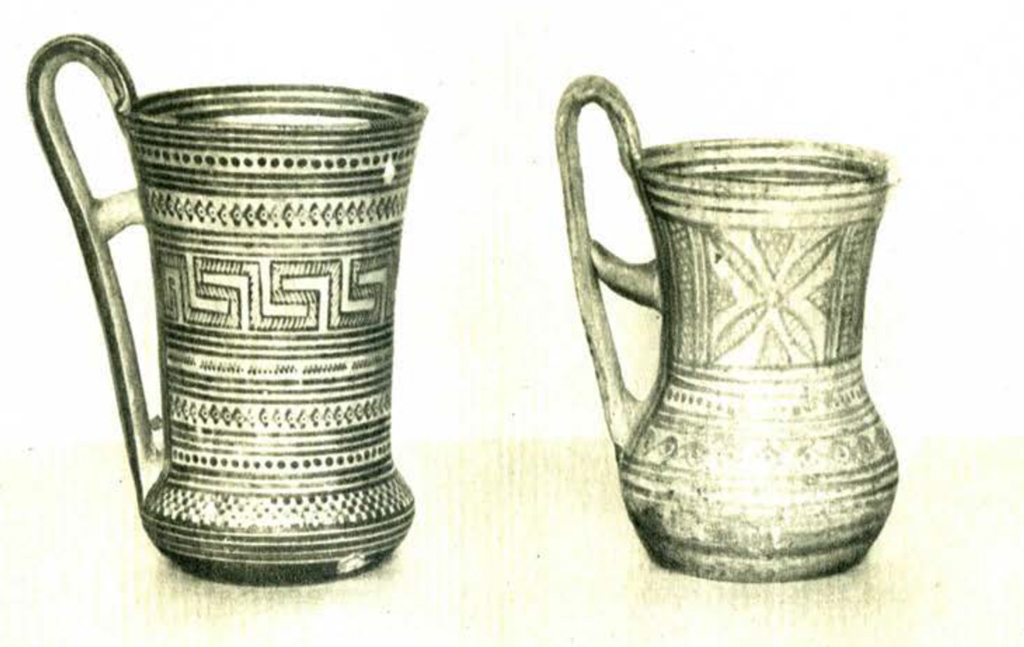ONE of the most striking phenomena of Greek decorative art is the appearance in about 1000 B.C. of a style of design generally called geometric. In the bronze-age during the second millennium before Christ, decoration was naturalistic and applied with complete freedom to the surface of the vase. Now in the beginning of the Iron Age, a new style begins. Linear ornaments, closely packed together row on row, supplant the earlier naturalistic style. What caused this sudden change in taste is a question not yet satisfactorily settled. It is often stated that the new style came with the Dorians from the north, but strangely enough it is found at its best in non-Dorian Attica, and inscriptions recently found on geometric vases are not written in the Dorian dialect. Again it has been suggested that geometric decoration developed directly from the stereotyped versions of plant and animal forms which characterized the late phases of the decorative art of the bronze-age, but this explanation does not tally with the fact that geometric art is by no means a decadent and exhausted art but shows a decided sense of form and balance. Vases painted in the geometric style, moreover, are found in graves where cremation was practiced instead of inhumation, which was the method of burial uniformly employed throughout the bronze-age. Perhaps the most logical solution of the problem is to say that during the bronze-age the prevailing influence in Greek art came from Crete where, as a result of quickening contacts with Egypt and with the East , a highly original art developed, but that, after the end of Cretan supremacy, the current set the other way, and the mainland Greeks, no longer under the spell of Crete, were left to develop their own innate sense of form and balance.

Museum Object Numbers: 30-41-1A, 30-41-1B
Image Number: 3407
The Museum purchased in June four specimens of geometric pottery. Two are beakers with high handles, and the other two are covered boxes or pyxides. The beakers measure twenty and twenty-two centimetres in height, and are decorated with zones of ornaments conspicuous among which are dotted circles, the maiander, and quatrefoils. On the pyxis (Plate IV) which measures thirty-three and a half centimetres in diameter, appear the swastika and the checker-board pattern, both well known in geometric art. The lid is surmounted by four horses. Beneath the horses is a small hole which served doubtless to let air into the box. The style of the decoration of these vases, as well as the shape and the clay, are characteristic of Attic geometric vases of the eighth century B.C.

Museum Object Numbers: 30-41-3 / 30-41-4
Image Number: 3403

